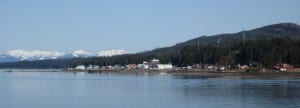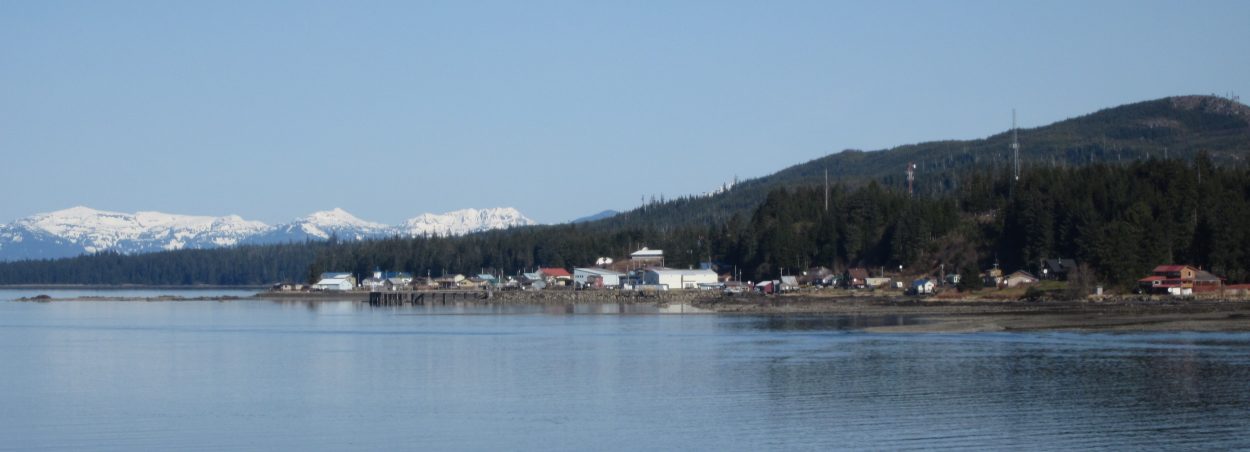A hatchery in the Southeast community of Kake is closing its doors this month and has released its final chum, pink and coho salmon. There’s still some hope that a larger regional hatchery organization can figure out a way to restart the salmon enhancement program there.
24GUNNUKweb
The Gunnuk Creek hatchery started in 1973 as a Kake High School project. Community members formed a non-profit and incorporated in 1976. General manager John Oliva says they’re boarding up the hatchery this month and will close the doors June 30th . He said the Kake Non-profit Fisheries Corporation did not have enough money to keep operating. “The corporation owes like 22 million dollars to the state. About half of that, maybe a little more than half of that is actually deferred interest, going back to 1981,” Oliva said.

Oliva noted the state could not provide additional funding and the non-profit was forced to close. “The corporation’s shut the doors voluntarily signed over all the assets to the state. So as of right now, we’re boarding up everying. The state’s sold off a good portion of the equipment, incubators, net pens, net pen complexes, anchor systems, forklifts, trucks, stuff like that to NSRAA.”
NSRAA is the Sitka-based Northern Southeast Regional Aquaculture Association. That regional non-profit was already partnering with Gunnuk Creek on a chum project off of nearby Kuiu Island. Now NSRAA is considering whether it should operate the Kake hatchery after Gunnuk Creek closes its doors.
NSRAA general manager Steve Reifenstuhl said they’re evaluating whether it pencils out to install new equipment to re-circulate and regulate the water in Gunnuk Creek. “So that we can number one clean up the water quality and then deal with the extremely cold temperatures in winter and the extremely high temperatures in summer. And by reducing the amount of water we need and recirculating it, we think that we can do a much better job at raising high quality eggs and fry.”
Gunnuk Creek has been logged and has increased sediment and greater temperature fluctuations. Reifenstuhl said the high cost of energy in Kake also will enter into the decision. They’re looking into a small hydro electric turbine to generate the needed electricity. They also have to consider the impact to NSRAA’s facility at Hidden Falls hatchery on Baranof Island where chum are raised. Reifenstuhl said it’s difficult to put additional pressure on the production at Hidden Falls. “It’s difficult for staff to manage another 55-60 thousand broodstock fish. It’s tough on the seiners to pull all those fish out of their fishery. And the facility wasn’t built for anywhere near that much. We can do it. But it would be better if we could do it in Gunnuk Creek.”
Ultimately it’s a decision for the NSRAA’s board of directors, based on information from engineers and staff. Meanwhile, that regional non-profit is going forward with new chum production nearby Kake at Southeast Cove. That program will mean 35 million chum released there next year, and 55 million the following year.
Staff at Gunnuk Creek released their final chum, pinks and coho in late May and early June. Gunnuk Creek’s Oliva thinks some of the salmon could continue to spawn after the hatchery shuts down. “I think there’s a good chance the pinks and the coho will,” Oliva said. “The pinks and the coho came from this creek. The coho definitely are a native Gunnuk creek stock. And the pinks, the hatchery back in the 90s was doing pinks and they stopped and the pinks continued to come so they may come back still. The chums on the other hand may be a different story. You know we put our weirs down and removed all our barriers so the fish can go upstream but there’s going to be limited spawning habitat up there for em. So we still might get some chums to come back but I don’t think there’ll be any great numbers.”
The hatchery was impacted when the Gunnuk Creek dam broke in 2000, leaving the community without a water supply for several days. The U.S. Army Corps of Engineers rebuilt the dam but Oliva said that too caused problems. “Basically had a full building full of alevins and they killed them all off with the construction. Lost all of our water and stuff when they were doing the construction. So we actually had to start rebuilding again and it was just a battle. You know this last year we’re finally seeing some good returns come back but it was a day late and a dollar short basically.”
Oliva says Gunnuk Creek has four full time employees and 10-12 season workers, mostly local kids who help with the egg takes each year. The fish returning to the area are caught by Southeast’s fishing fleets. The bears that congregate on the creek each year, drawn by the returning chums, have also been an attraction for smaller cruise ships.










